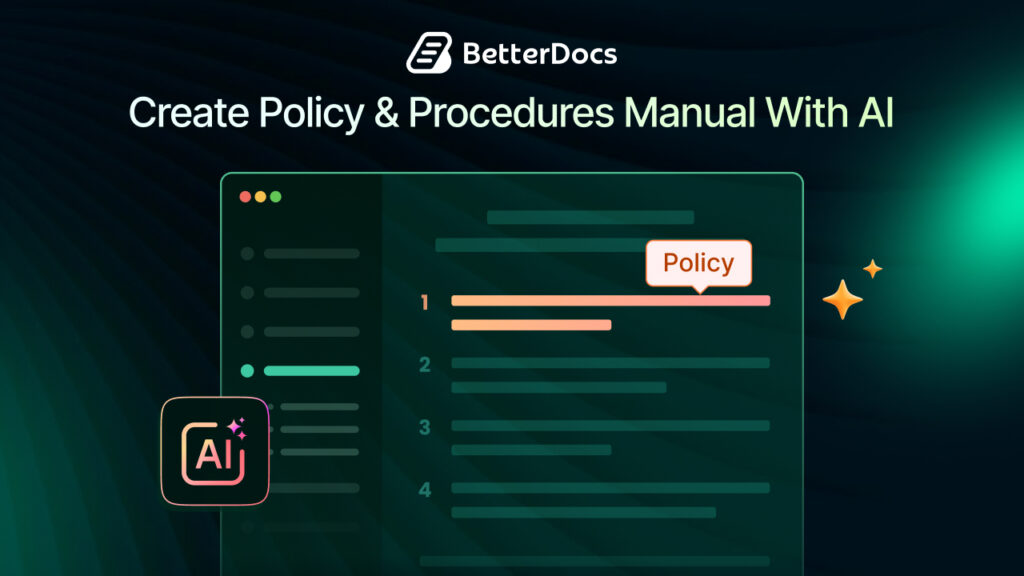89 percent of millennials use a search engine to find answers before making a call to get customer service. To help your business flourish and provide a world-class customer experience, a tested and proven method is to create a documentation site. But it’s not a one-time task. You have to keep updating regularly and evaluating documentation performance and improve it to keep customer satisfaction scores high.
If you are looking for pen-and-paper instructions to measure your documentation performance and effectiveness, then you have come to the right place. Let’s check out the must-follow steps to evaluate the performance of your documentation precisely.

Why Should You Measure the Effectiveness of Docs?
Before exploring the ways to measure your documentation performance, you need to understand why you should conduct it. Measuring the effectiveness of documentation is essential for several reasons:
1. Improving Customer Experience
Effective documentation offers users straightforward solutions, with step-by-step tutorial guides in most cases, and empowers them to address issues autonomously. Evaluating its effectiveness guarantees that the documentation is accessible and easy to understand on users’ own, thereby minimizing frustration and enhancing overall user satisfaction.
2. Reducing Support Tickets & Costs
Well-crafted documentation can significantly reduce the support tickets and questions. By evaluating its effectiveness, you can pinpoint where users face challenges the most and improve your documentation strategies in those regards, resulting in fewer support requests and lower expenses for the support team.
3. Identifying Gaps and Opportunities
Evaluating your documentation performance regularly allows you to spot any gaps, outdated information, or areas that require further elaboration. It also reveals chances to introduce new content that addresses user needs and challenges.
4. Providing Actionable Insights
Documentation performance evaluation provides valuable insights based on data that can guide decision-making. This process can highlight areas that need enhancement or indicate where additional content is necessary, ensuring that the documentation fulfills its intended role efficiently.
6. Building Credibility and User Empowerment
When users can quickly locate the information they require, they gain a sense of empowerment and confidence in utilizing the product. Evaluating the effectiveness of documentation guarantees that users receive precise and useful information, fostering trust in both the product and the brand.
Indicators of Documentation Performance: What Should They Be?
But what criteria do you base your analysis on? Based on your company structure, you must pick the key indicators for evaluating documentation performance. After researching the best-practiced methods, we have listed down the key indicators of documentation performance. Let’s have a look.
📌User Satisfaction and Feedback
Gathering direct feedback from users via surveys, ratings, or qualitative reviews is essential for assessing the clarity and usefulness of documentation. Satisfaction ratings play a crucial role in determining whether users can easily find the information they require and utilize it for their needs without hassle.
📌Content Accuracy and Updating Frequency
Whether the documentation is still relevant at present or not is an important indicator. Make sure the documentation is regularly updated to showcase the newest features, processes, or product information. Keeping it accurate and current demonstrates that the documentation is of high quality and trustworthy.
📌 Time to Resolution (TTR)
TTR refers to the time users spend searching for the information they need to address their issues. A lower TTR indicates that users find the content helpful and easy to explore. Tracking Time to Resolution (TTR) for a support team, particularly when providing documentation to solve specific problems, can be done using a systematic approach:
- Measure the start time and end time of the issue ticket creation and solution.
- Create a category in your support tracking system for cases where documentation is part of the resolution.
- Monitor how long it takes for the issue to be resolved once the documentation is shared with the customer.
- Check if customers confirm the issue is resolved after using the documentation or if they require further assistance.
- If possible, track how often the provided documentation is accessed after being shared with the customer. This can give insights into its usefulness and impact on reducing TTR.
📌 Self-Service Success Rate
This metric measures the proportion of users who can resolve their problems using the documentation without needing to contact support. A high rate of self-service success indicates that the documentation is thorough and easy to navigate.
📌 Search Effectiveness and Analytics
Keeping an eye on analytics such as search terms, bounce rates and page visits is essential for understanding whether users are locating the information they seek or if they’re getting confused. Effective documentation tends to show strong engagement and search results, which in turn results in lower bounce rates.
📌 Support Ticket Deflection
Effective documentation frequently results in fewer support tickets. Monitoring the number of support requests over time can reveal how effectively the documentation tackles common problems.
In-Depth Guide: How to Evaluate Documentation Performance of Your Knowledge Base?
Now, it is time to hop into the main part: how to evaluate your documentation performance effectiveness. Well, there is no proven method of calculating the effectiveness of a document in a single equation. You have to run a few experiments, gather data and then evaluate them. Following best practices will help you measure documentation performance and improve efficiency. To evaluate the effectiveness of documentation, you can:
💡 Gather Customer Satisfaction Feedback
The first and foremost step to evaluate documentation performance is to conduct a customer survey. When you communicate with customers directly, then you can get real insight into how useful your documentation is. You can send survey forms to your customers’ inboxes to gather data.
If you want to go with a faster solution to gather customers experience and satisfactions, then you may include a customer usefulness rating form with every single piece of documentation. This way, whenever the customer finishes checking out the documentation, he or she can share reactions instantly.

Con il BetterDocs knowledge base plugin for WordPress, you can enable the customer reaction collecting form globally and analyze documentation performances easily from the Analytics dashboard.

💡 Track Knowledge Base Metrics
If you want to measure any kind of performance precisely, you need to create knowledge base metrics and start measuring them. To evaluate documentation performances, you should measure bounce rate, average time spent on documentation, etc.
Check Out 9 Knowledge Base 9 Metrics You Should Track
💡 Support Tickets Created Based on Specific Doc
As your goal is to provide your customers with prompt support through documentation, you should measure and calculate a correlation between created support tickets and having documentation on similar topics.
If you are still getting support tickets for a configuration that already has documentation, then it implies that the documentation performance wasn’t good enough. Also, if a customer seeks help and you provide documentation on that; still he or she wants more assistance, that indicates, the documentation isn’t effective enough. Periodically, you should run these tests.
💡 Benchmark Against Industry Standards
Only observing and calculating documentation performances onsite won’t provide you with unified insights. You have to research the best practices of competitor companies and compare your documentation to theirs. Then you will get a clear idea of what you are lacking and how to fix it.
💡 Identify Gaps in Docs Efficiency
If you conduct the above practice, then you already have important data points. These will indicate how your documentation is performing, what things you are skipping and most importantly, what the gaps are. Then you need to prioritize areas where your documentation falls short. Based on it, you should make a plan and start improving your documentation efficiency.
💡 Test Updated Documentation Performances
Evaluating the effectiveness of documentation performance is not a one-time process. You have to iterate the best practices regularly. When you are done making improvements in documentation quality, the thing to do is test. Test revised documentation with users or stakeholders to ensure it’s effective.
Note: You can also consider conducting usability studies with a small number of participants representing different types of users. This can help you gather more representative statistics and feedback.
Improve Your Customer Experience with the Better Docs Performances
Measuring documentation performance is a continuous process. While customer satisfaction is considered the top priority of business, documentation will help you a lot to increase your score. If you have a knowledge base of your business, it’s high time to start evaluating documentation performance and take effective measures.
Hopefully, this article has guided you through. If you want to enlighten yourself with more of these blogs, then subscribe to us. Also, don’t forget to share what your core metrics are to analyze documentation performance.
![5+ Knowledge Base Challenges You Should Look Out for in 2026 [With Solutions]](https://betterdocs.co/wp-content/uploads/2025/12/1280x720-_-Blog-Banner-_-Knowledge-Base-Challenges-1-1024x576.jpg)





